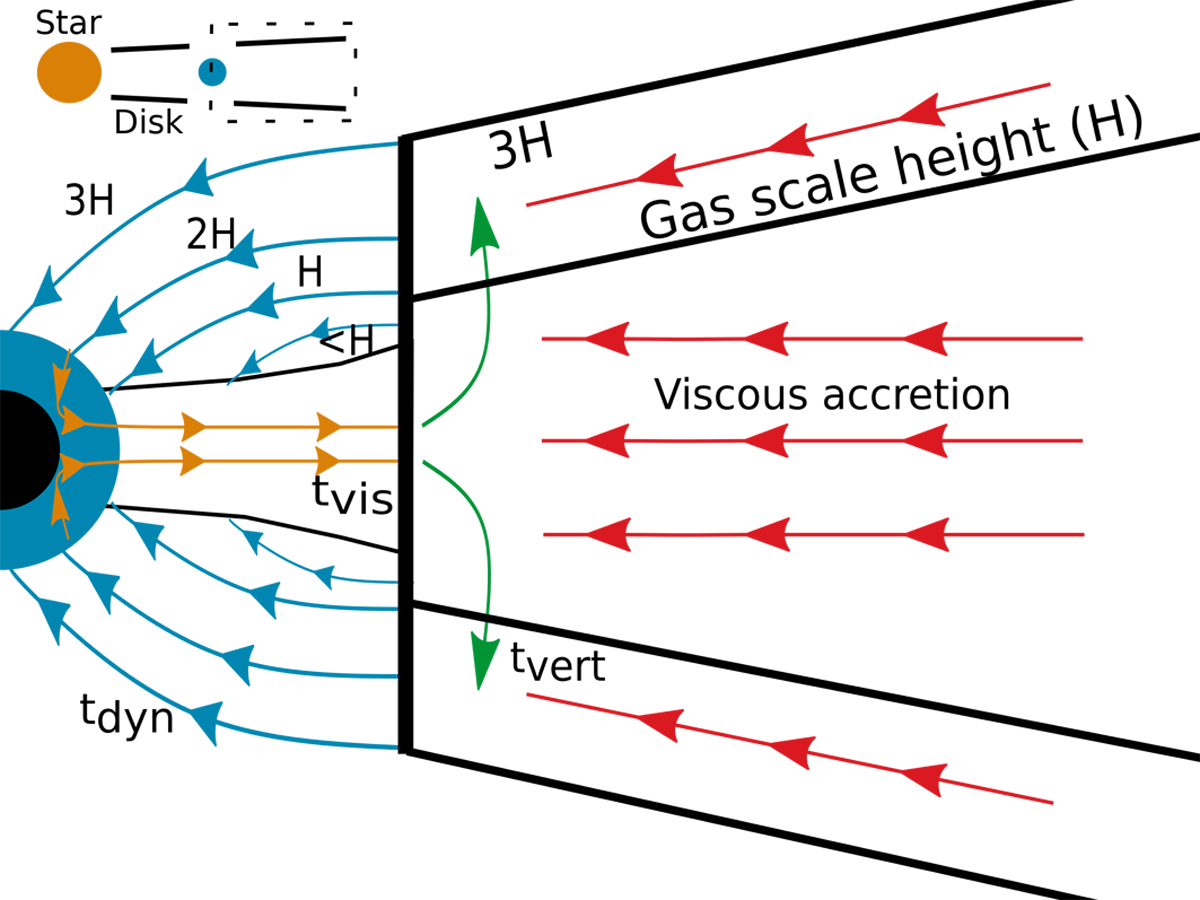Fig. 1

Physical system that drives the vertical accretion assumed for this work. When a planet is large enough it opens a gap in its natal protoplanetary disk (top left corner). The majority of gas accretion onto a planet then falls vertically from between one and three scale heights (blue arrows; Batygin 2018). Some of this gas is incorporated into the growing planet, while some recycles back into the surrounding protoplanetary disk through the circumplanetary disk (yellow arrows). Gas falling into the gap from below one scale height also feeds the circumplanetary disk and does not reach the planet. Once in the surrounding protoplanetary disk there is vertical flow (green arrows), which reestablishes hydrostatic equilibrium near the edge of the gap. Meanwhile the gap is also supplied by new gas accreting radially from radii outside the current location of the planet (red arrows). The relevant timescales of these processes are shown. See text for details.
Current usage metrics show cumulative count of Article Views (full-text article views including HTML views, PDF and ePub downloads, according to the available data) and Abstracts Views on Vision4Press platform.
Data correspond to usage on the plateform after 2015. The current usage metrics is available 48-96 hours after online publication and is updated daily on week days.
Initial download of the metrics may take a while.


